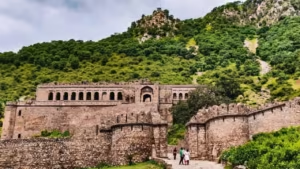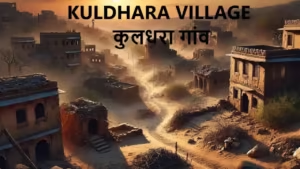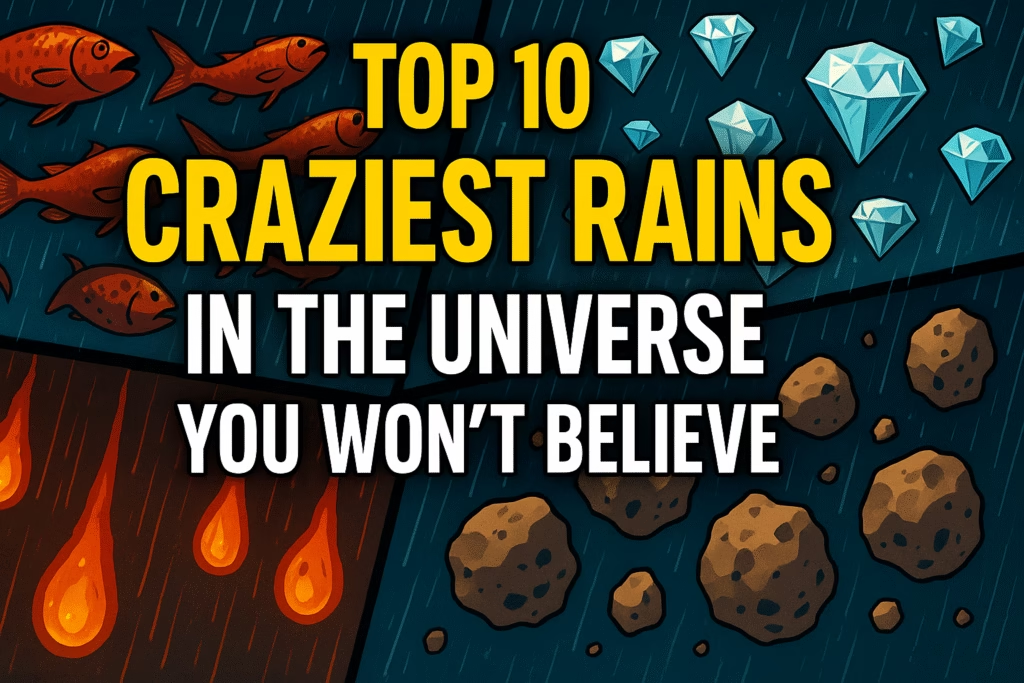
The universe is full of amazing planets, and some of them have the strangest kinds of rain you can imagine. While we know Earth has water rain, other planets have acid, diamonds, and even glass falling from the sky. Let’s explore the top 10 craziest rains in the universe you won’t believe.
1. COROT-7b – Rain of Rock
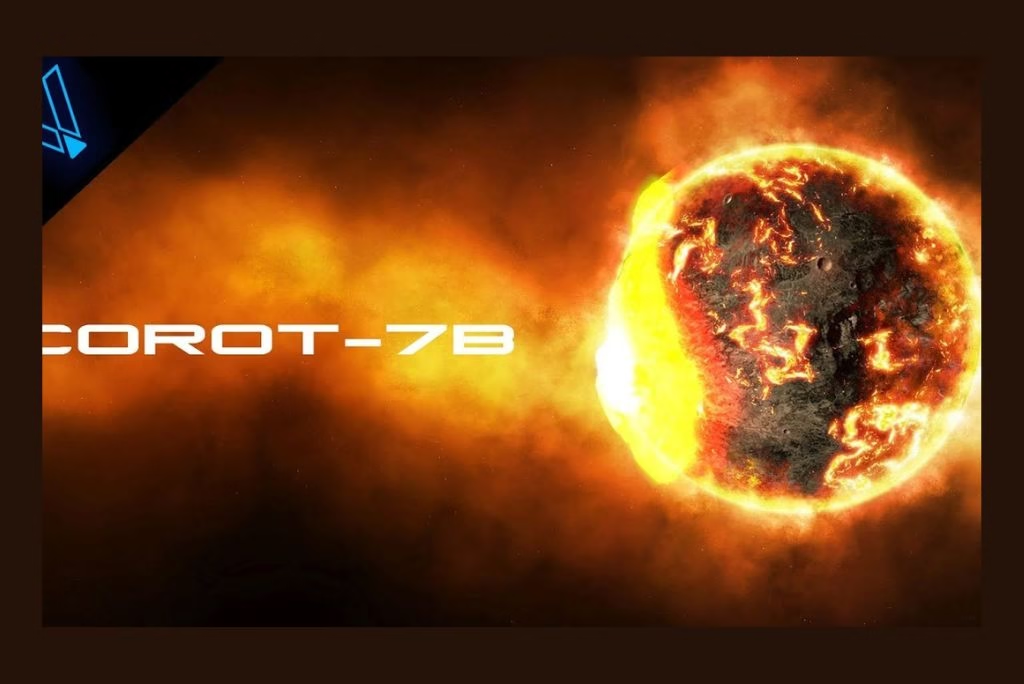 COROT-7b is an exoplanet very close to its star. It is extremely hot — over 2,000°C during the day. Because of this heat, rocks melt into lava and form clouds made of rock vapor. When these clouds move to the cooler side of the planet, they rain molten rock. Imagine lava falling from the sky! COROT-7b is so close to its star that a year there is only 20 hours long. It’s one of the most dangerous planets ever found.
COROT-7b is an exoplanet very close to its star. It is extremely hot — over 2,000°C during the day. Because of this heat, rocks melt into lava and form clouds made of rock vapor. When these clouds move to the cooler side of the planet, they rain molten rock. Imagine lava falling from the sky! COROT-7b is so close to its star that a year there is only 20 hours long. It’s one of the most dangerous planets ever found.
2. Venus – Rain of Sulfuric Acid
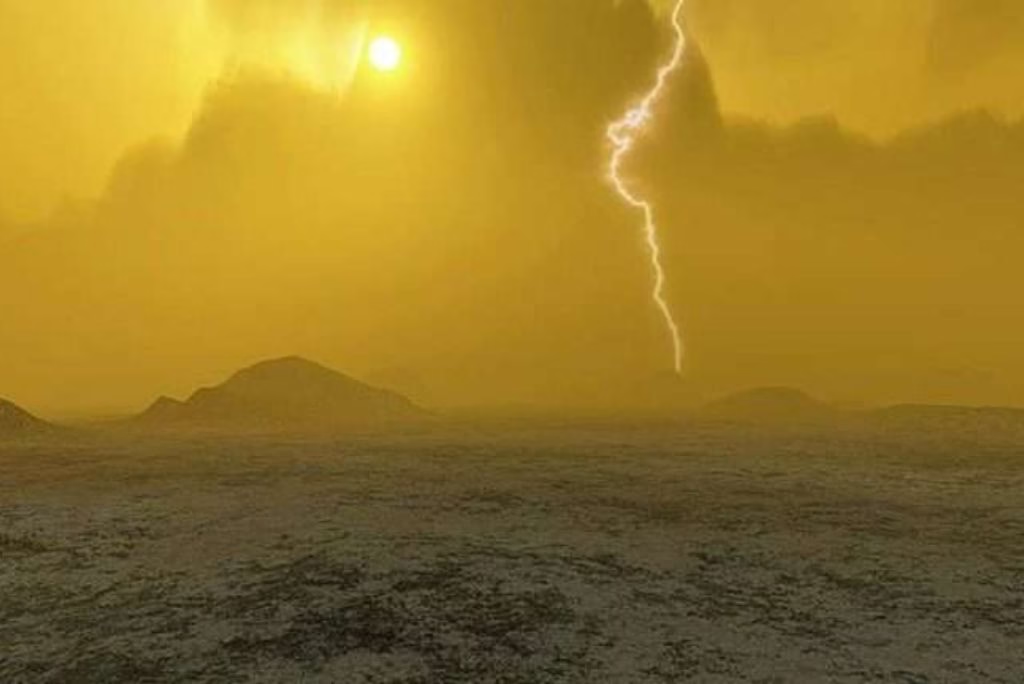
On Venus, it rains a very dangerous liquid called sulfuric acid. This acid is toxic and can burn almost anything. The thick clouds of Venus are full of this acid. But the planet is so hot that the rain evaporates before it touches the ground. So, the acid falls and disappears in the air. Venus is covered with thick clouds and has a strong greenhouse effect, making it one of the hottest planets in our solar system.
3. Jupiter – Rain of Helium and Possibly Diamonds
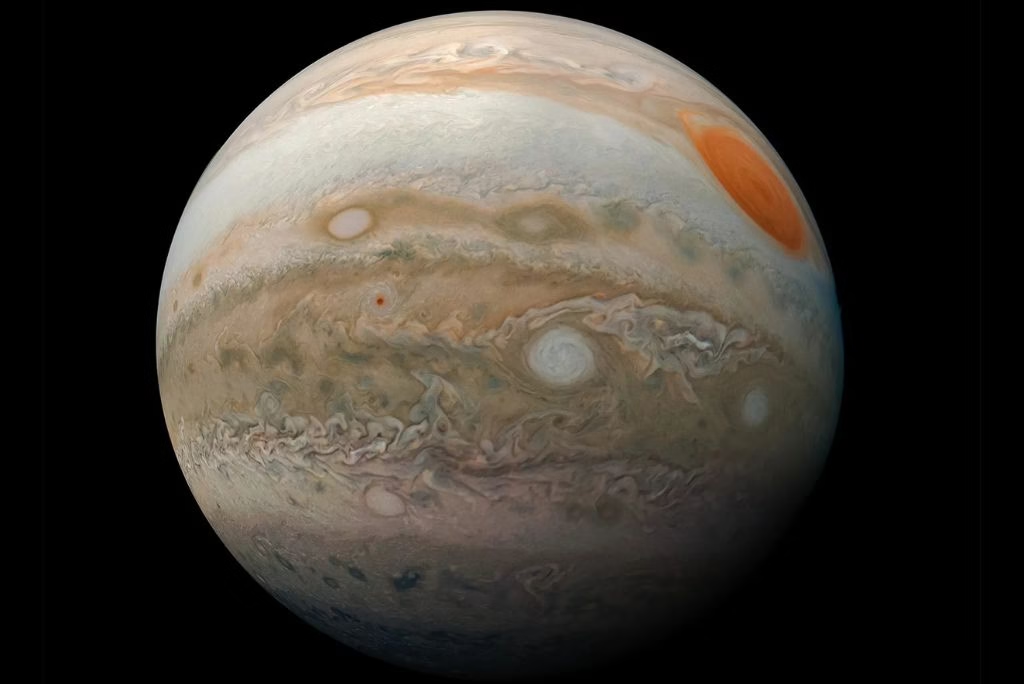
Jupiter is a giant gas planet. Deep inside its thick atmosphere, scientists believe it rains helium. Some experts also say it may rain diamonds! The pressure and heat in Jupiter’s clouds are so strong that carbon can form diamond-like pieces. These diamonds may fall like rain deep inside the planet. Jupiter’s size, strong gravity, and powerful storms make it one of the most mysterious planets in the solar system.
4. Saturn – Rain of Diamonds
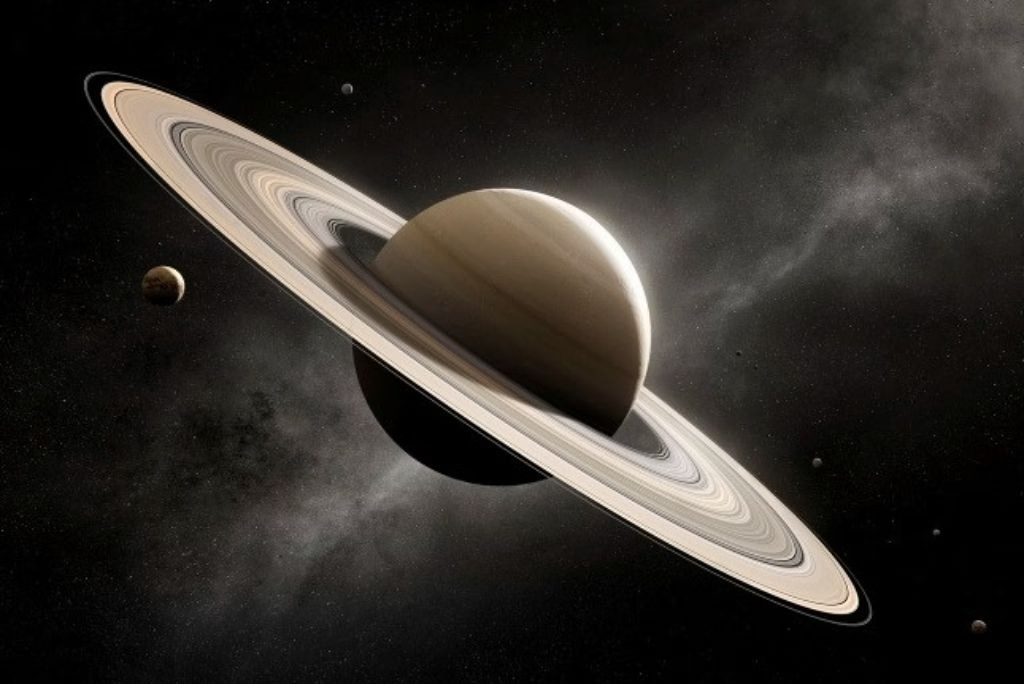
Just like Jupiter, Saturn may also have diamond rain. It has huge storms and strong pressure in its atmosphere. When lightning strikes in Saturn’s clouds, it turns methane gas into carbon. This carbon turns into small diamonds that fall like rain. But these diamonds likely melt before they reach the surface. Saturn is famous for its beautiful rings and is the second-largest planet in the solar system.
5. Kepler-7b – Rain of Liquid Iron

Kepler-7b is a huge gas planet far away from our solar system. Scientists think that on this planet, it rains liquid iron! The planet is extremely hot, with temperatures over 1,400°C. The heat is so strong that metals like iron can melt and form clouds. These clouds may drop heavy, hot iron rain. This rain would be dangerous and deadly. Kepler-7b is another example of how wild and different planets can be outside our solar system.
6. WASP-76b – Rain of Vaporized Iron
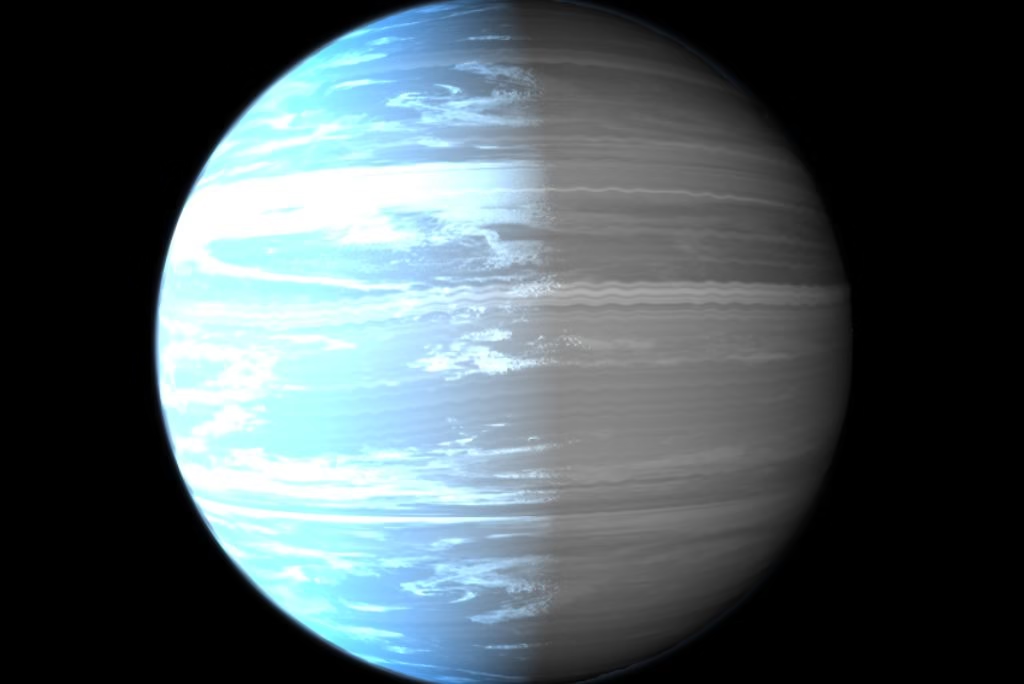 WASP-76b is another exoplanet (planet outside our solar system) where something scary happens. On one side of this planet, it’s always day, and the other side is always night. On the hot side, iron turns into gas. Strong winds blow this gas to the cooler side, where it turns back into iron rain. So, this planet has a cycle of iron vapor and rain. It’s a very dangerous world where metal falls from the sky like rain.
WASP-76b is another exoplanet (planet outside our solar system) where something scary happens. On one side of this planet, it’s always day, and the other side is always night. On the hot side, iron turns into gas. Strong winds blow this gas to the cooler side, where it turns back into iron rain. So, this planet has a cycle of iron vapor and rain. It’s a very dangerous world where metal falls from the sky like rain.
7. Titan (Moon of Saturn) – Rain of Methane

Titan is Saturn’s largest moon and has thick clouds and rivers made of methane, a kind of gas. On Titan, it rains liquid methane instead of water. These methane rains fill lakes and rivers on the moon. Even though it’s very cold, Titan’s weather works like Earth’s water cycle. Scientists are interested in Titan because it looks like early Earth and might help us understand more about how life began.
8. Io (Moon of Jupiter) – Rain of Sulfur
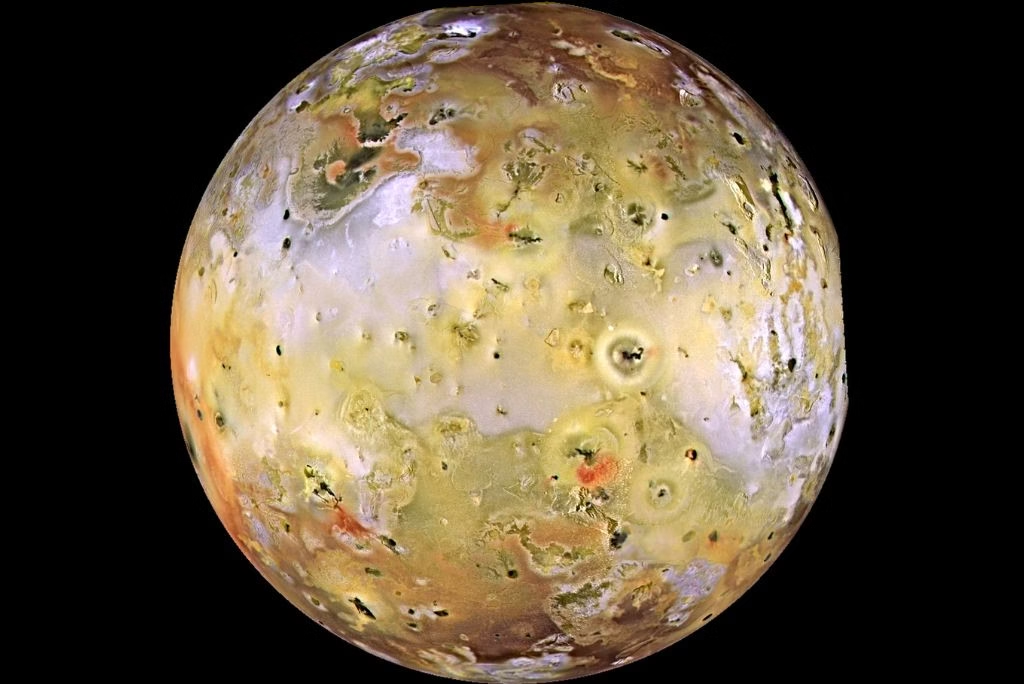
Io is one of Jupiter’s moons and is covered with volcanoes. It doesn’t have normal rain like Earth. Instead, it has rain made of sulfur and volcanic materials. When volcanoes erupt on Io, sulfur gas turns into small droplets and falls back to the surface like rain. The surface of Io looks yellow and red because of the sulfur. It is one of the most active volcanic places in the solar system.
9. Mars – Dust and Snowfall
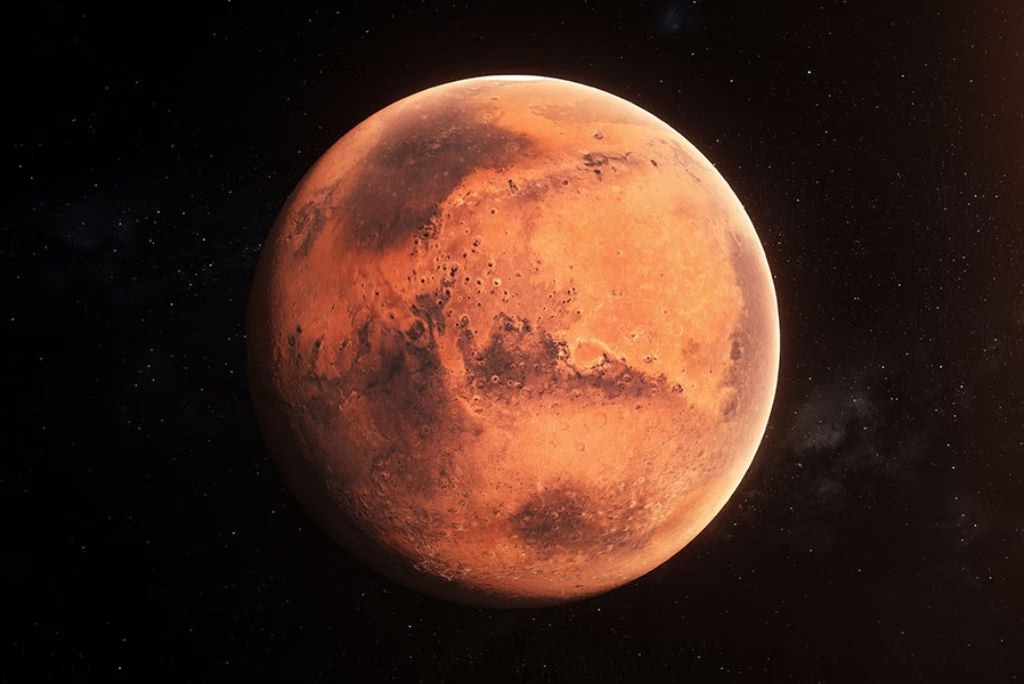
Mars doesn’t have much rain today, but long ago, it may have had water rain. Now, it sometimes has snowfall made of carbon dioxide (dry ice). Mars also has dust storms that cover the whole planet. The snow falls in the polar regions and is not like Earth’s soft snow. Mars is dry and cold, and scientists are still studying if it could support life in the future.
10. HD 189733b (Exoplanet) – Rain of Glass
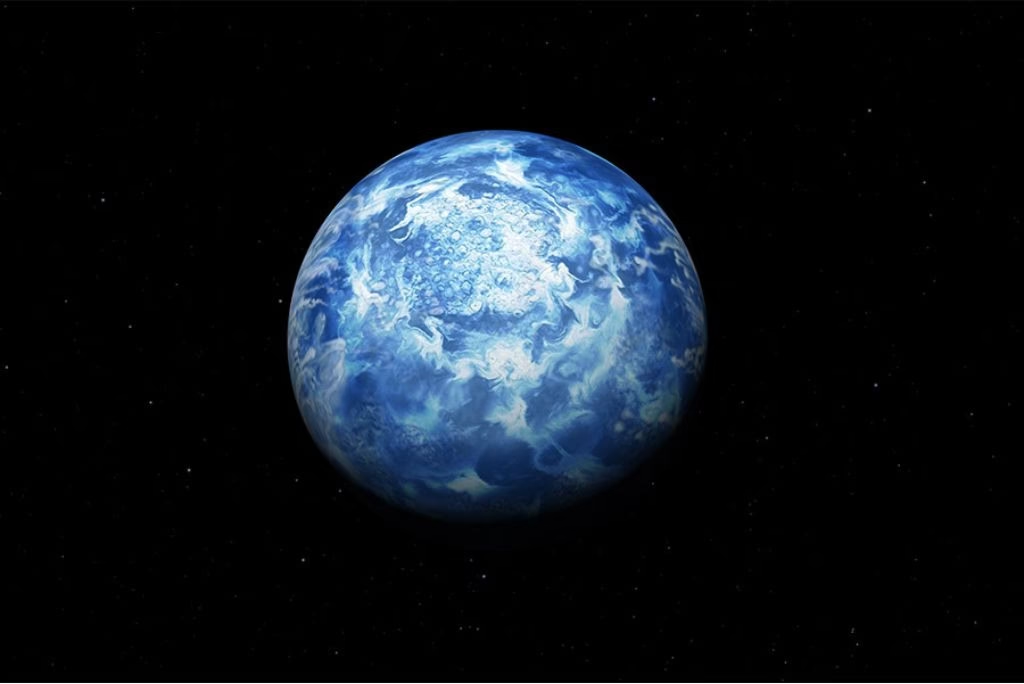
This planet is far outside our solar system and is very different. HD 189733b is famous because scientists think it rains molten glass sideways in strong winds. The wind is so fast that the glass rain could cut through anything. The planet looks blue like Earth but is very hot and dangerous. It’s one of the wildest planets discovered and shows how strange planets can be beyond our solar system.
Our universe is full of amazing and strange planets where it rains acid, diamonds, glass, and even metal! Each planet has its own weather and mystery. Keep exploring space wonders with Blogimine—your go-to place for exciting facts and mind-blowing stories from around the galaxy. Follow us for more space secrets and fun learning every day!











